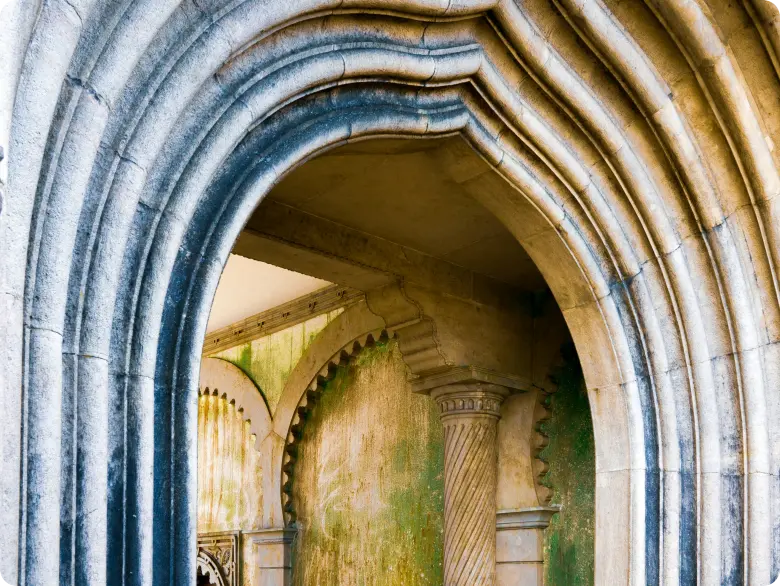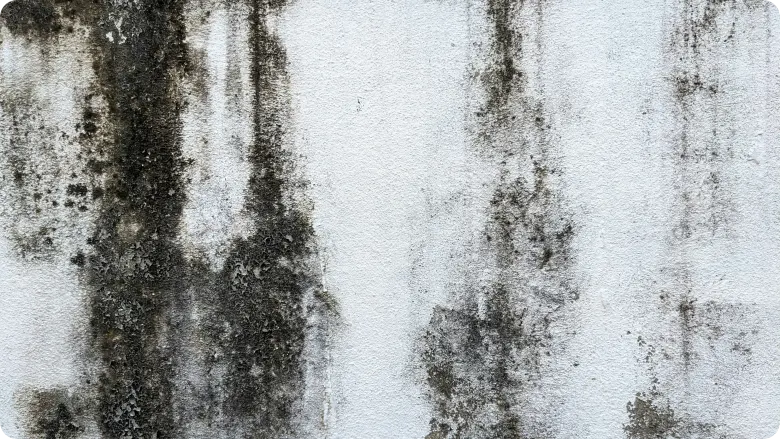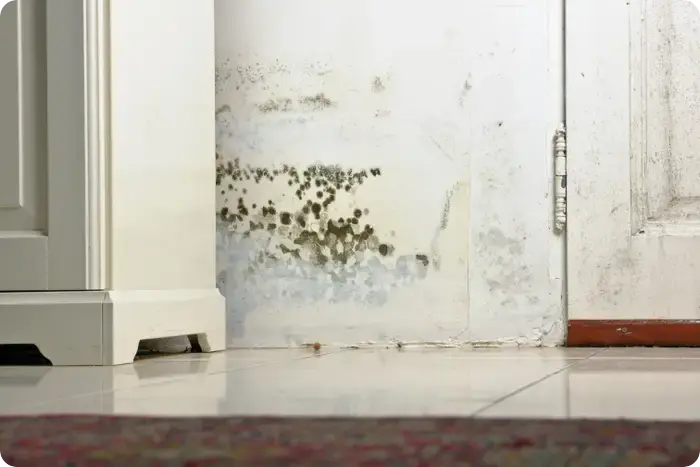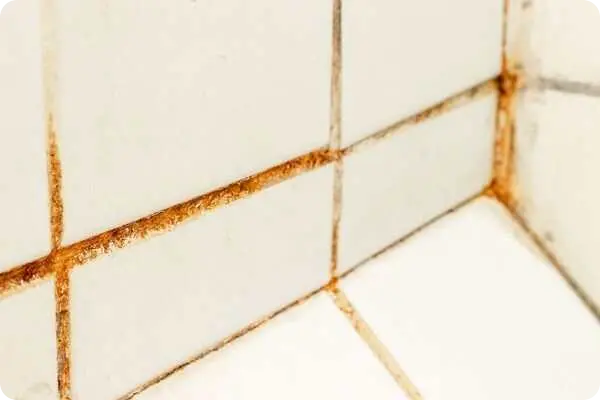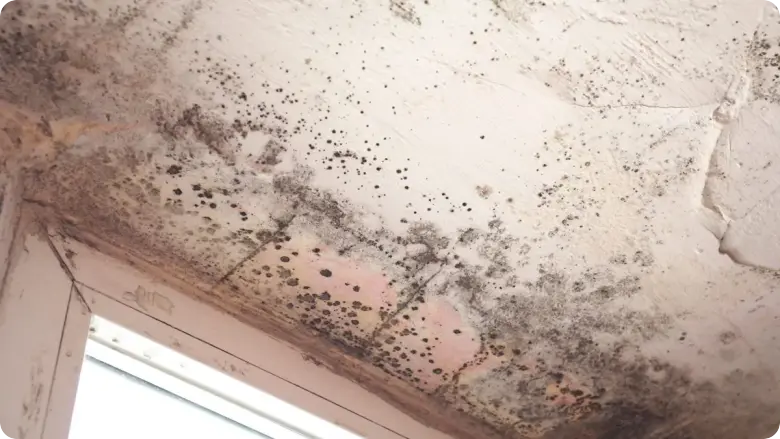How to clean and prevent mold in Portugal?
It's time to address the mold situation in your Portuguse house. We’ll lay out the short and long-term strategies to cleand and prevent it from ever coming back.
Portuguese mold clean-up
If you've determined the mold patch is small enough for a DIY approach, you can get to work. But before you grab a sponge, remember this golden rule echoed in every expat forum: Safety First! Mold releases spores when disturbed, and you don't want to be breathing them in.
Your Safety Gear:
- Mask: Don't just tie a scarf around your face. Use a proper FFP2 or N95 mask to filter out airborne spores.
- Gloves: Use rubber or nitrile gloves to protect your hands from both the mold and the cleaning solution.
- Eye Protection: Goggles are best to prevent spores or cleaning solution splashes from getting in your eyes.
- Ventilation: Open the windows wide before you start. If the room has an extractor fan, turn it on.
A crucial piece of advice from seasoned mold-fighters: Do not just paint over it. Painting over active mold is like putting a bandage on a broken leg. It hides the problem, but the mold continues to grow underneath, eating away at the surface and releasing spores. You must kill and remove the mold completely before even thinking about painting.
Mold clean-up solutions in Portugal
Walk into any Portuguese supermarket (Continente, Pingo Doce) or hardware store (Leroy Merlin) and you'll find a variety of products. Here's a breakdown of the most common and effective options, many of which are debated and recommended daily in online expat groups.
1. Bleach (’Lixívia’): Local Champion
This is the traditional go-to solution for many Portuguese households and is incredibly effective on non-porous surfaces.
-
How to Use: Dilute it. A common ratio is one part bleach to ten parts water. Put it in a spray bottle.
-
Pros: It kills surface mold very effectively and quickly on things like tile, grout, glass, and properly sealed, painted walls.
-
Cons: The fumes are harsh. It's not effective on porous surfaces like wood or drywall because it can't penetrate to kill the mold's "roots." The water in the bleach solution can actually feed the mold inside the material.
2. White Vinegar (’Vinagre Branco’): Expat Favorite
This is the hero of countless online discussions. It’s less toxic, environmentally friendly, and surprisingly effective.
-
How to Use: Use it neat. Put pure white vinegar into a spray bottle. No need to dilute.
-
Pros: Its acidic nature allows it to penetrate porous surfaces and kill the mold at the root. It's safer to use and the smell, while strong, dissipates once dry.
-
Cons: It's not a sanitizer (it won't kill all bacteria like bleach will), and some people dislike the smell. It may take longer to work.
3. Commercial Mold Cleaners (’Produto Anti-Bolor’):
These are specially formulated products designed to kill mold. They often contain a mix of fungicides and cleaning agents. They are very effective, but always read the label for safety instructions. Some Portuguese swear by a red or blu bottle, from a brand with a yellow-and-black logo.
How to clean mold in Portugal?
1. Gear Up: Put on your mask, gloves, and eye protection.
2. Apply the Solution: Spray your chosen cleaner (vinegar or diluted bleach) directly onto the moldy area. Be generous: make sure it's completely saturated.
3. Wait: This is a critical step. Don't just spray and wipe. Let the solution sit for at least an hour. This gives it time to work and kill the mold.
4. Scrub: Use a stiff-bristled brush or a scrubbing sponge to scrub the area. You should see the mold coming off.
5. Rinse and Dry: Wipe the area clean with a damp cloth. Then dry the area thoroughly. Use a clean, dry rag, a towel, or even a hairdryer. A fan pointed at the area will also help it dry completely.
6. Dispose: Seal the used sponges, rags, and your mask in a plastic bag before throwing them away to contain the spores.
Portuguese mold prevention
Cleaning mold is a reaction. Preventing it is the strategy. If you take nothing else away from this guide, let it be this: you must actively change your habits and your home's environment, especially from October through April. Here is the collected wisdom from thousands of expats who have learned the hard way.
1. Ventilate, Ventilate, Ventilate!
This is the number one, non-negotiable rule. The Portuguese habit of airing out the house (’arejar a casa’) is your new religion.
- Daily Cross-Breeze: Every morning, for 10-15 minutes, open windows on opposite sides of your home to create a strong cross-current of air. Yes, even when it's cold. You are not trying to cool the house down; you are exchanging the humid, stale indoor air for fresh, drier outdoor air.
- Targeted Ventilation: After a shower or bath, open the bathroom window or run the extractor fan for at least 20-30 minutes. When cooking, always use the hood extractor fan over your stove.
2. Control Humidity with a Dehumidifier (’Desumidificador’)
This is the single best investment you can make for your home and your health in Portugal. It is the most frequently recommended appliance in any discussion about mold.
- How it Works: It pulls moisture directly out of the air, collecting it as water in a tank. You will be astonished at how many liters of water it collects, especially on rainy days.
- Where to Place It: You can place it in a central location like a hallway or move it between problem rooms. Many people run it in the bedroom during the day and the living room at night.
- The Bonus: A dehumidifier makes the air feel warmer, helps clothes dry infinitely faster, and reduces that damp feeling on your furniture and bedding.
3. Drying Clothes
Drying laundry indoors on a rack releases a staggering amount of moisture into the air: a feast for mold.
- Outside is Best: Whenever possible, dry your clothes outside.
- Dehumidifier Trick: If you must dry indoors, put the laundry rack in a small, closed room (a spare bedroom or large bathroom) with the dehumidifier running. Your clothes will dry quickly, and the moisture will end up in the tank, not on your walls.
4. Heat Your Home Strategically
Remember, a cold house is a damp house. Keeping interior surfaces warm prevents condensation.
- Low and Slow: Instead of blasting a heater for an hour and then turning it off, it's far more effective to maintain a low, consistent temperature (around 18-20°C). This keeps the walls from getting cold. Oil-filled radiators are excellent for this kind of steady heat.
- Target Problem Areas: Use a small heater in the bathroom before you shower to warm up the tiles and walls.
5. Create Space for Airflow
Mold loves stagnant air.
- Pull Furniture from Walls: Leave a gap of 5-10 cm (a few inches) between your wardrobes, sofas, and headboards and the exterior walls. This allows air to circulate and prevents mold from growing in that hidden, dark space.
- Don't Overfill Closets: Your clothes and shoes need to breathe. If closets are a problem, use small, passive moisture absorbers (absorvedores de humidade), which you can buy at any supermarket.
By adopting these habits, you are fundamentally changing the environment within your home. You are no longer providing the damp, still conditions that mold needs to survive. You are taking control.








